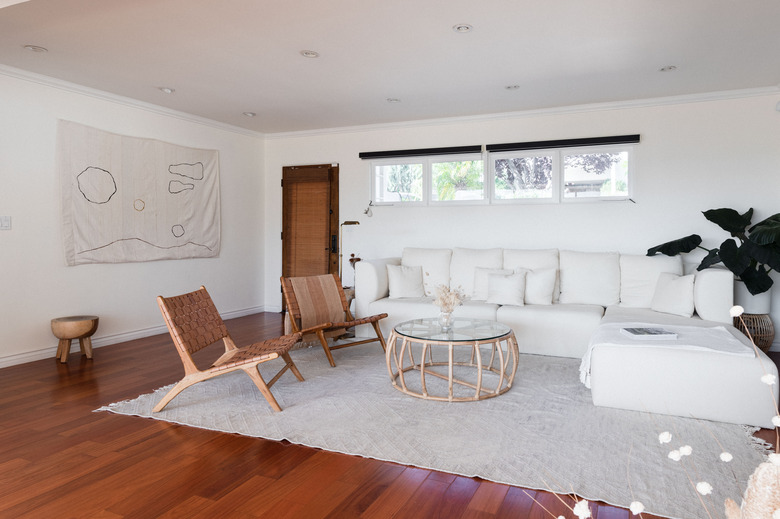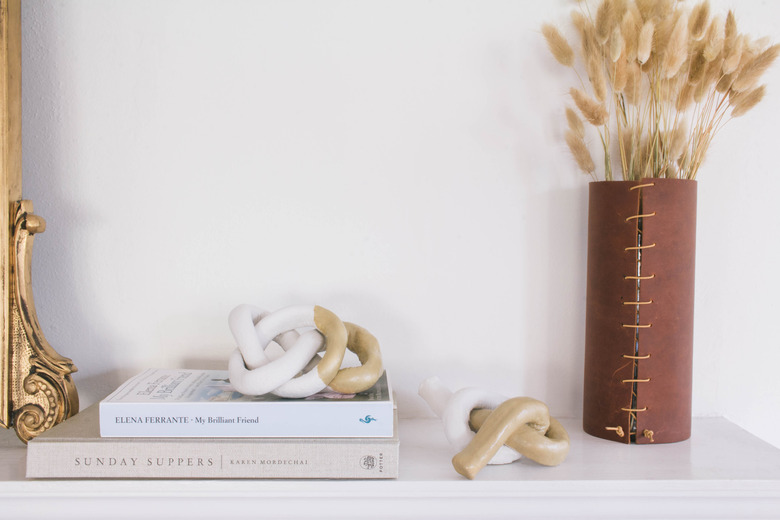Keep It Simple: Minimalism's History And Evolution
We may receive a commission on purchases made from links.
If you spend enough time on Pinterest or Instagram decor accounts, you know the basic tenets of minimalism already: neutral shades, few trinkets, clean lines, and natural materials. But if you've ever wondered about the history of minimalism and how it snuck into our homes, we're here to help.
First, a note on its name. The major modern usage of the term ties into the late 1950s American art scene. Minimalist art diverged from figural or representative art to explore geometric shapes, and qualities such as "truth, order, simplicity, and harmony," according to the Tate. Artists whose work fit into this aesthetic philosophy include Agnes Martin, Donald Judd, and Frank Stella. Many sources attribute the coining of the term to philosopher Richard Wollheim, who wrote the 1965 essay "Minimal Art."
You can also trace the influence of the Bauhaus, established in 1919, which strived to produce both practical and aesthetically pleasing items. Architects like Mies van der Rohe and Walter Gropius created structures that were innovative for the time, but oftentimes austere and simple in their exteriors. There's also the clear incorporation of wabi-sabi and Japanese minimalism. The focus on pared-down aesthetics is perhaps hard to really pinpoint in its beginnings — especially when considering design and interiors beyond Western ones.
In The Longing for Less: Living with Minimalism , Kyle Chayka points out that midcentury modern buildings could also be considered minimal. The Eames House, as Chayka argues, shows minimalist features. When it comes to architecture, many movements incorporate crisp silhouettes and angles.
Yet as Chayka notes (specifically in regard to Philip Johnson's 1949 Glass House), "the style can make you feel like you don't belong in a space unless you conform to it, as in upscale cafés or severe hotel lobbies."
Of course, it's in the eye of the beholder just how you want to incorporate minimalism into your space, whether it's in your bedroom or dining room.
Minimalism's hold on the design world carried through to the 1990s and can still be felt today. The style made its way into popular culture again in the last decade. You might recall the 2016 Netflix documentary Minimalism: A Documentary About the Important Things, centering around the attitudes of Joshua Fields Millburn and Ryan Nicodemus. The duo "help over 20 million people live meaningful lives with less," according to their site, through their podcasts, websites, books, and more. Fast forward to 2019 and people flocked to their local thrift stores to donate things they purged from their homes after watching Tidying Up With Marie Kondo (with a second season on the way).
Minimalism continues to evolve and adapt — as well as mix with other styles for unique looks. In the 2018 book New Minimalism: Decluttering and Design for Sustainable, Intentional Living, authors Cary Telander Fortin and Kyle Louise Quilici write about the concept of "new minimalism." They define it as "a call to a mindful, intentional way of living, prioritizing relationships and experiences above material things."
The style also continues to change, with variations like Scandinavian minimalism and even minimalism that more overtly incorporates color. We look forward to seeing where it goes next.

